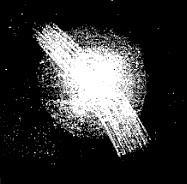Discovered by Nell de Bréauté Epoch 1824 Feb 15.0(UT) Discovered 29 December 1823 Last perihelion 9 December 1823 | Discovery date December 29, 1823 Eccentricity 1.0 Inclination 103.8194° | |
 | ||
Alternativedesignations 1823; Great Comet of 1823, Comet De Bréauté-Pons People also search for X/1872 X1, C/1760 A1, C/1652 Y1 | ||
The Great Comet of 1823, also designated C/1823 Y1 or Comet De Bréauté-Pons, was a bright comet visible during the last month of 1823 and the first few months of 1824.
It was independently discovered by Nell de Bréauté at Dieppe on December 29, by Jean-Louis Pons on the morning of December 30, and by Wilhelm von Biela at Prague on the same morning. It was already visible to the naked eye when discovered: Pons initially thought he was seeing smoke from a chimney rising over a hill, but continued observing when he noticed it did not change appearance. He was later to note that the comet was, puzzlingly, more easily visible to the naked eye than through a telescope.
The comet was particularly known at the time for exhibiting two tails, one pointing away from the Sun and the other (termed an "anomalous tail" by Harding and Olbers) pointing towards it.
Pons was also the last astronomer to detect the comet, on April 1 1824.
